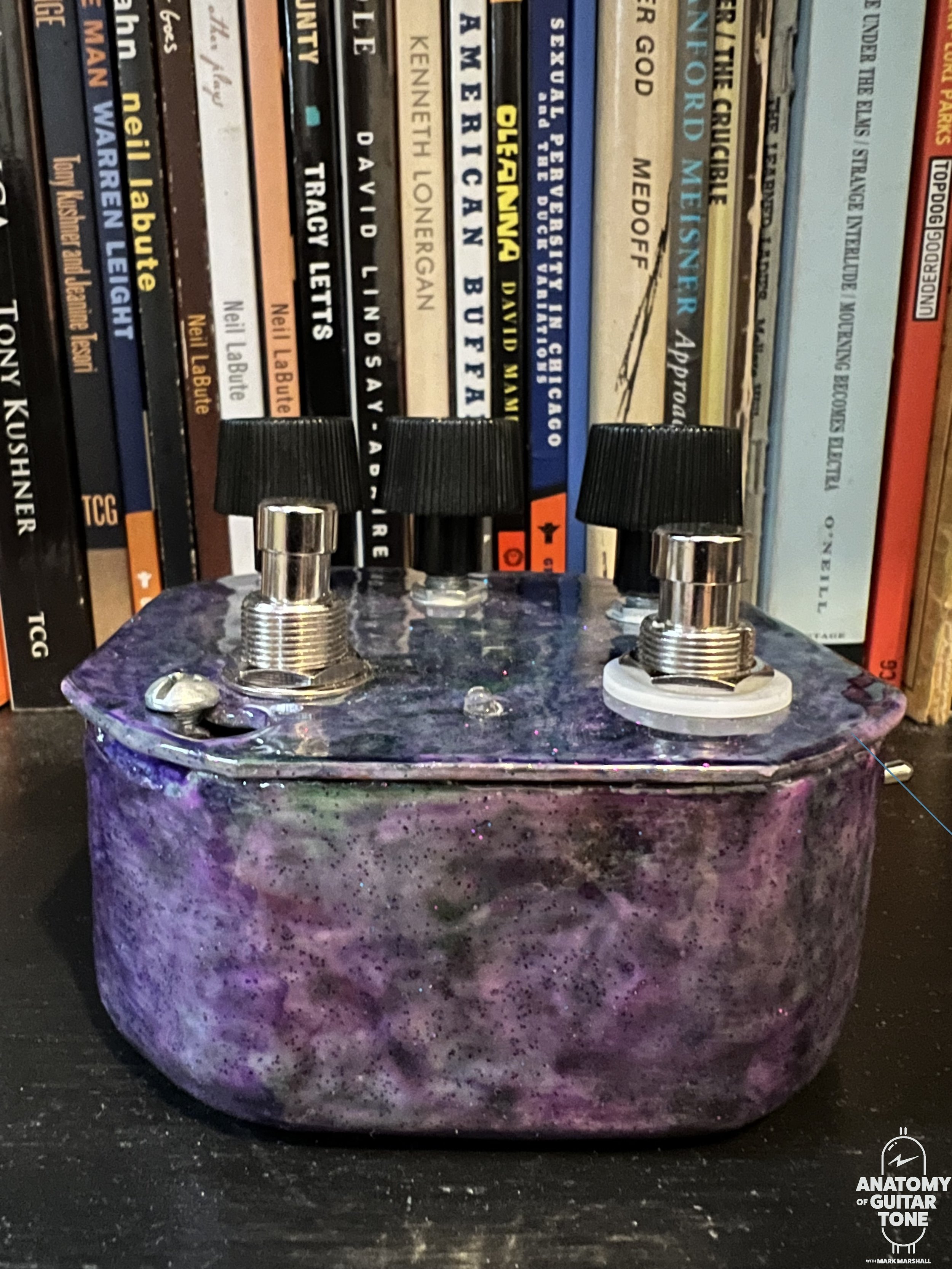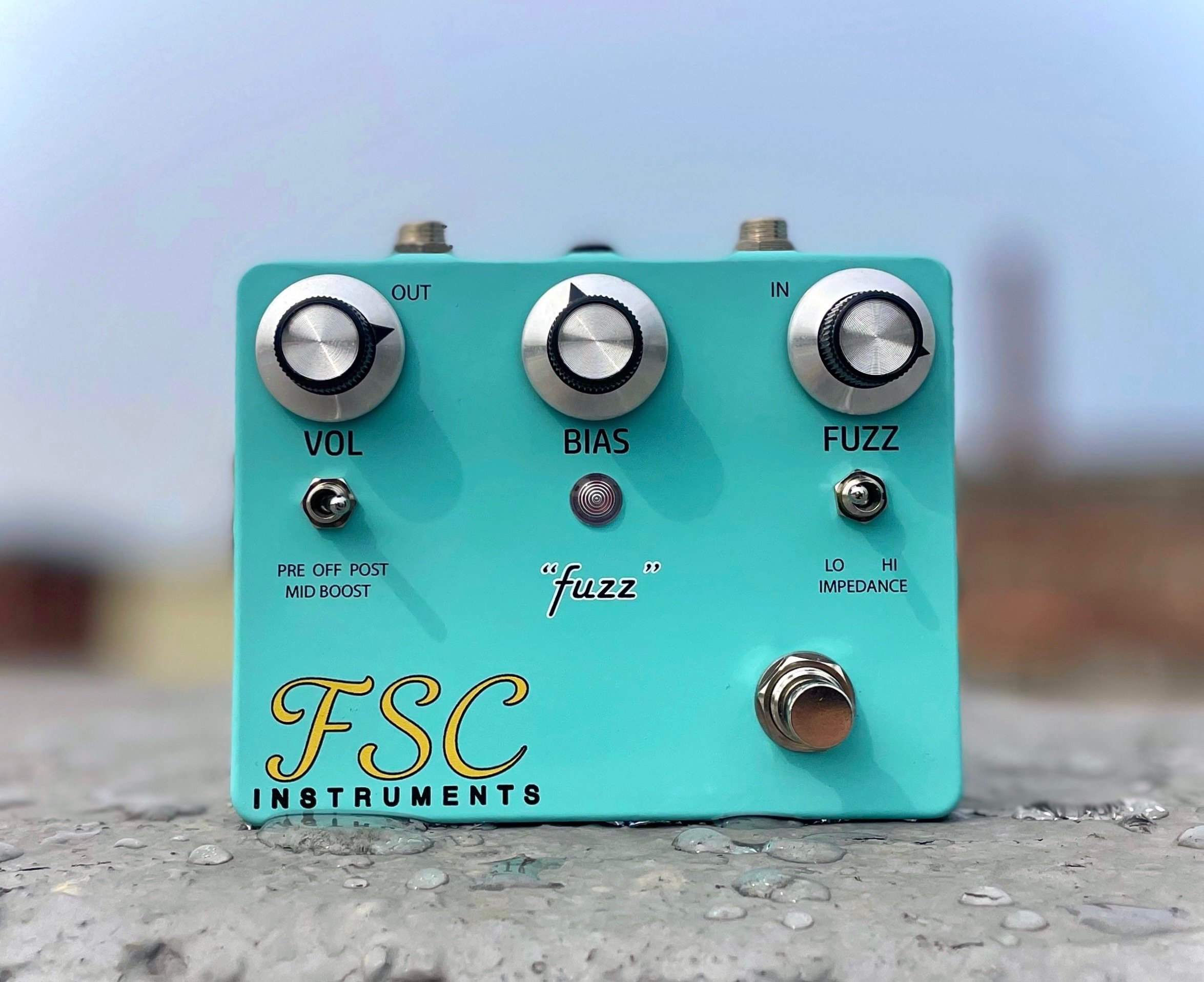Speebtone Harmonic Jerkulator Fuzz
Every so often, a truly distinctive gem emerges amidst the sea of fuzz circuits that pay homage to the iconic Fuzz Face, Tone Bender, and Big Muff designs.
These moments, however, are far rarer than one might imagine. The prevailing trend often leans towards replication rather than innovation. Admittedly, this has its merits; I find solace in the likes of Analog Man, artisans who meticulously breathe life into vintage fuzz circuits.
Yet, how refreshing it is to encounter a breath of contrast. The Speebtone Deluxe Bastrd Son of the Harmoonic Jerkulator pedal, a revelation upon my first encounter through a video demo, stands as a prime testament to this refreshing departure. It refused to tread the well-trodden path of traditional fuzz pedals, carving its own niche.
The very essence that immediately seized my auditory senses was its ability to generate a tone reminiscent of tube sag. This idiosyncratic quality, often overlooked in the realm of fuzz, deserves our attention. Numerous fuzz pedals boast their compression and attack characteristics, but the Jerkulator had more to offer.
Consider, for instance, the dichotomy between a Tonebender MKI and a fuzz face circuit – the former affords a broader passage for initial transients, setting the stage for an enlightening divergence.
Enter "amp sag." The phenomenon that ensues when a tweed Fender amp is cranked to the hilt is nothing short of enchanting. Beyond the luscious overdrive, the allure of "tube sag" emerges. With every note struck, there exists a subtle diminuendo in volume, as if the amplifier momentarily bows to the limits of its capability. Thus, chords reverberate, momentarily compressed, only to be reborn in a gentle swell upon release.
This auditory marvel echoes in the works of Neil Young, who cherishes his tweed Fender Deluxe. Yet, the majority of overdrive pedals, even those, seldom replicate this ebbing and flowing dance. A personal experiment with an Effectrode Tube Drive, further embellished by an Effectrode PC-2A compressor in the aftermath, bestowed upon me a taste of tube sag's entrancing aura. The PC-2A, in particular, masterfully mimics the controlled compression emblematic of tube sag's embrace.
Observe a subtle yet potent strategy: positioning the compressor after the drive, a subtle trick that flourishes in the presence of a clean amp, weaving the spell of a sag-infused tone. Gratitude to Phil Taylor for illuminating this secret.
Allow me to impart a couple of intriguing revelations concerning Speebtone.
In a realm where pristine graphics and immaculate factory packaging dominate, a breath of fresh air emerged in the form of an unabashedly authentic pedal: Homemade. Steve Hamilton, the artisan behind this creation, employs standard junction boxes sourced from local hardware emporiums. Each box undergoes meticulous customization—painted, sanded, and artfully distressed, infusing each pedal with a unique design.
Despite its wallet-friendly price tag ($90 on Reverb), this pedal exudes an air of unassailable quality. The potentiometers and switches are mounted with a stability that often eludes pricier counterparts in my collection. Every jack exudes an air of premium craftsmanship, and the potentiometers exude tactile finesse.
Brandishing no logo or flashy branding; it remains a singularly odd and distinctive pedal. Further, a discreet LED lends it a practical touch—a brilliant concept for pedal housing that I'm surprised has eluded wider adoption.
The circuit is inspired by the Interfax Harmonic Perculator, which is a rare pedal to be acquired. Tim Escobedo orchestrated a circuit that meticulously mimics the original Perculator, which Steve then modified.
Although rooted in the rarefied Harmonic Percolator, the Jerkulator embodies Steve's ingenious twist.
Diverging from the norm, the Jerkulator forsakes a gain knob entirely; its fuzz parameter is firmly set to maximum. Instead, a volume knob extends the invitation to modulate pedal output. The "magic knob," an affectionate moniker for the starve control, is where intrigue thrives. It introduces a musical squish into the equation. While the voltage starve knob might seemingly masquerade as a surrogate gain adjuster, it, in fact, enacts a metamorphosis akin to circuitry fatigue—a catalyst for the coveted tube sag tonality.
“The “magic knob,” an affectionate moniker for the starve control, is where intrigue thrives. It introduces a musical squish into the equation. ”
A delight unfurls when pedal artisans venture beyond the confines of musical orthodoxy, gifting us a treasure trove of experimental delights. My musical journey spans diverse realms, from classical orchestration to rock and experimental electronic scores, each resonating with a distinct tonal palette. The Jerkulator, with its second momentary footswitch, bestows upon us the tantalizing prospect of engaging in a feedback oscillation loop.
This spellbinding endeavor funnels the signal back into the input channel, weaving a complex auditory tapestry where the live performance harmonizes with this sonic mayhem.
Harnessing the leftmost knob empowers a nuanced calibration of the feedback loop. At its lowest ebb, stutter effects are created, while a twist towards the zenith ushers forth a realm of cacophonous oscillations—a veritable odyssey into a realm of noise, wherein the pedal thrives as a standalone noise generator, unburdened by the need for input.
Embrace the toggle switch perched on the pedal's side, ushering forth the choice between two input capacitors. The .022 input capacitor caters splendidly to the guitar's voice, yet falls short in accommodating the lower registers craved by bassists and other bass-laden instruments. Enter the 1uf capacitor, an inclusion that augments the Jerkulator's versatility, enabling seamless transitions between both worlds.
An overdriven amp plays a pivotal role in the alchemy of fuzz—an integral component often overlooked amidst the contemporary fascination with "pedal platform" amplification. Make sure you try pairing your fuzz pedals with a slightly saturated amp for true delight.
Consider a light overdrive pedal in tandem (overdrive placed after a fuzz) with the Jerkulator if a pristine amplifier is a must.
A deviation exists between fuzz and overdrive pedals—many traverse through a carousel of overdrives in pursuit of that elusive tonal nirvana. A challenge lingers here; we're often trapped in the yearning for drive pedals to mirror the feel and timbre of a fully cranked amplifier.
“fuzz pedals do not meander down the path of amp emulation. Fuzz pedals carve their own distinct narrative”
Yet, the realm of fuzz pedals do not meander down the path of amp emulation. Fuzz pedals carve their own distinct narrative. Enamored by this genre, Fuzz enthusiasts cultivate an eclectic collection, not as mere echoes in pursuit of a singular tone but as a vivid kaleidoscope where the nuances of varied circuits paint a symphony of tonal shades. My repertoire doesn't host multiples of the same fuzz circuit—instead, many colors to paint a sonic landscape.
Let’s listen to audio examples. I used an Ampete 88RS to switch between amps and ran into a Universal Audio Ox.
Ex1 uses the Jerkulator with a Stratocaster with FSC ‘59 pickups, a Surfy Bear Metal spring reverb, and a Vox AC15 that is slightly dirty.
I’m going to tie in a Teese RMC Picture Wah into the equation.
I will adjust the starve knob from a 3 pm position to a 9 pm position.
How about a lead line?
Let’s switch the guitar and amp. I’m now using a Les Paul Standard with Voodoo ‘59 Humbuckers and a Marshall SV20H Plexi.
I used the Valhalla delay plugin after recording this example. You can hear low-octave ring modulation style effects from the Jerkulator.
I’m going to experiment with the feedback loop and a Chase Bliss CXM 1978.
Let’s try using a bass with the Jerkulator. I’ll start with a Fender P Bass run into a vintage Ampeg V48 bass amp.
I’m going to switch to a Warwick FNR 5 string bass with active picups.
Lastly, I’m going to experiment using an Arp 2600 analog synth.
You can listen to me walkthrough the Speebtone Deluxe Bastard Son of the Jerk-U-Lator on episode 14 of the Anatomy of Tone Podcast.














